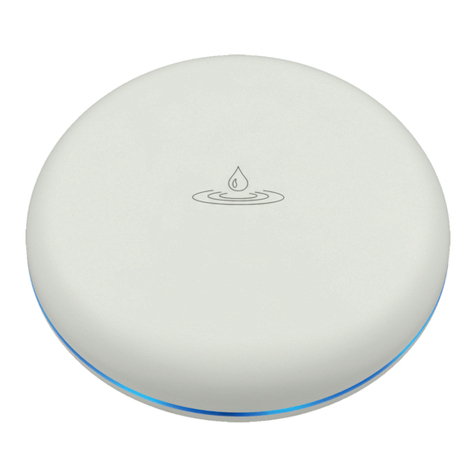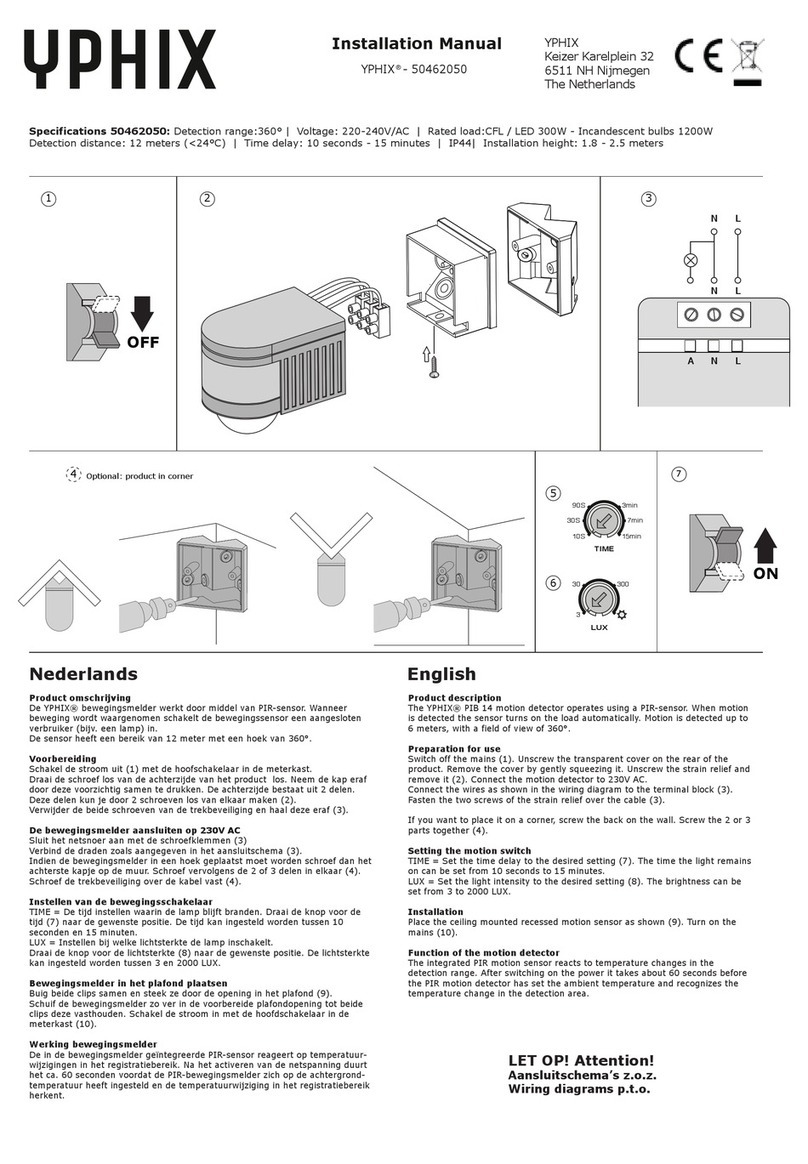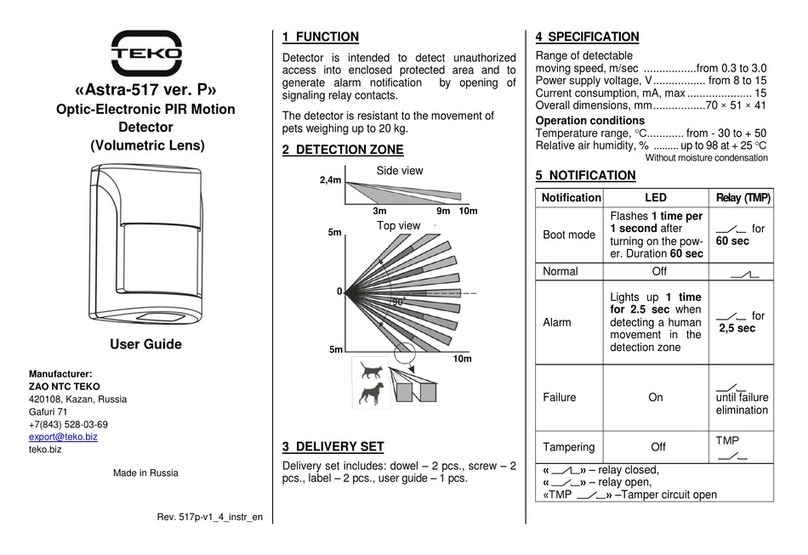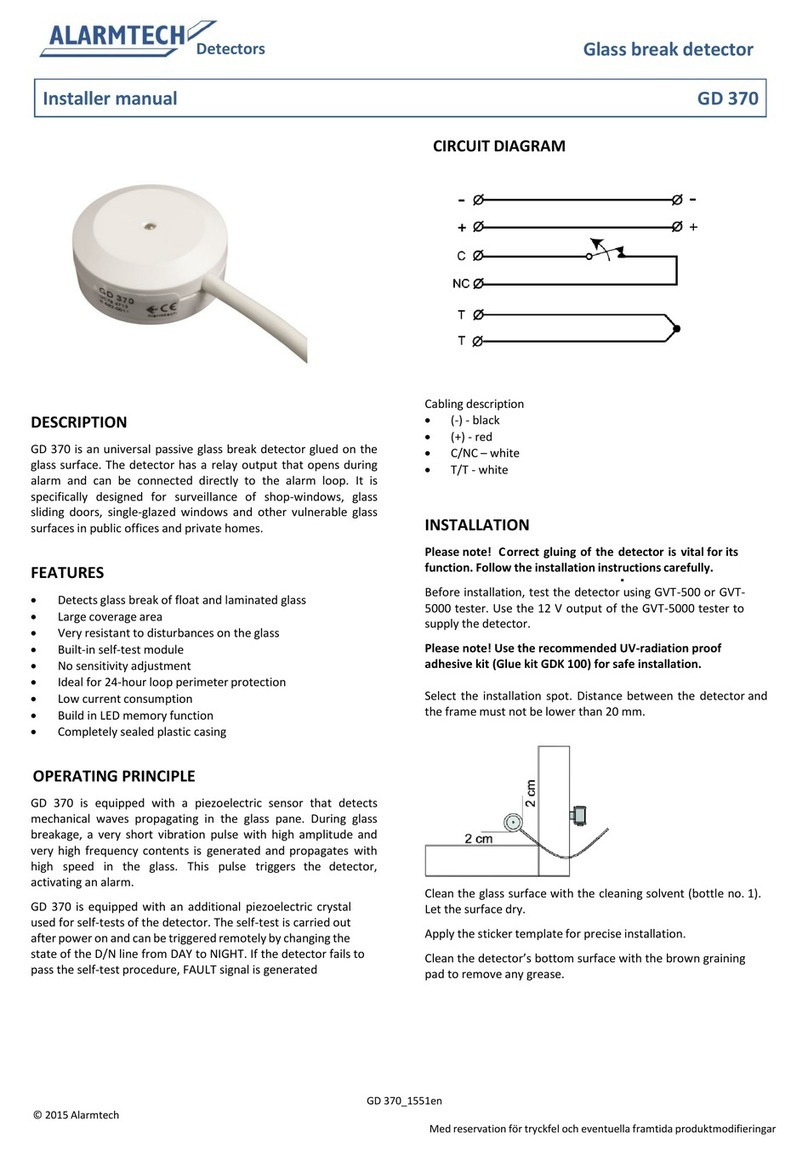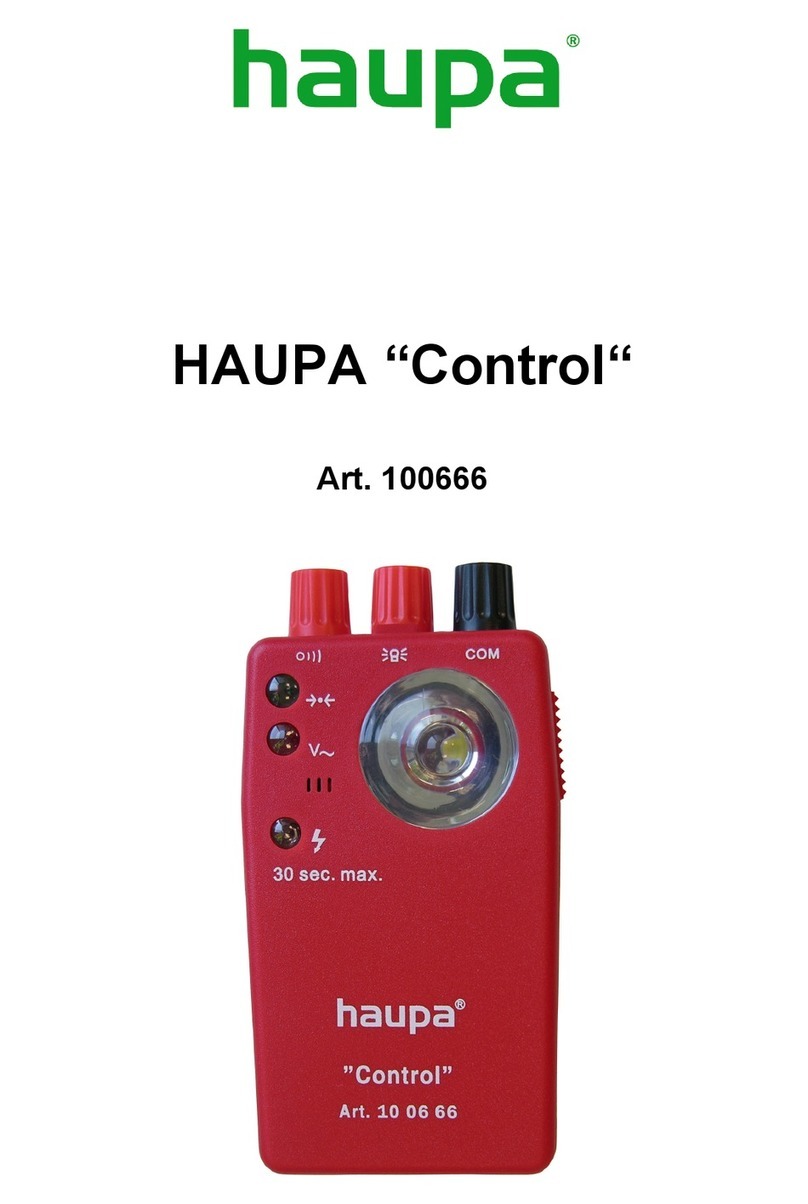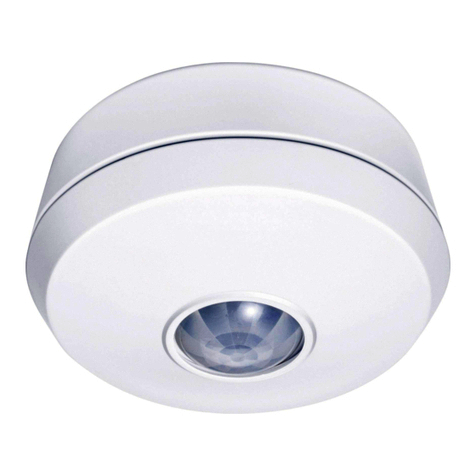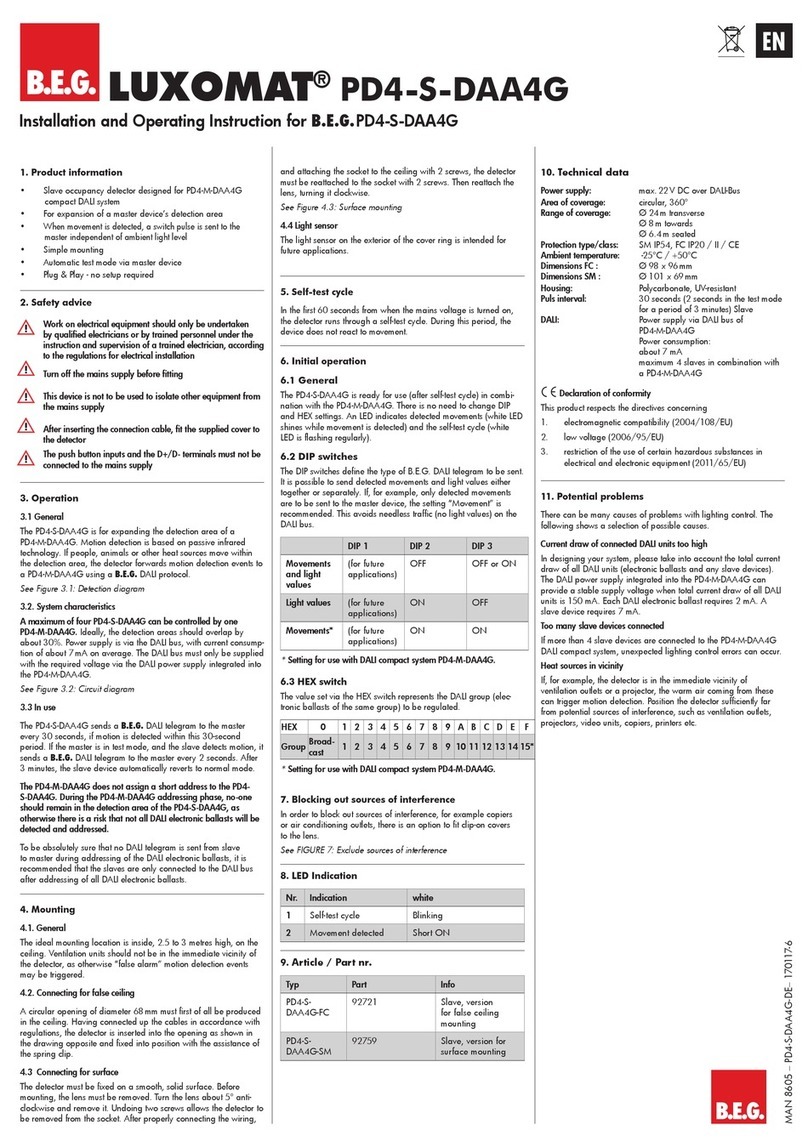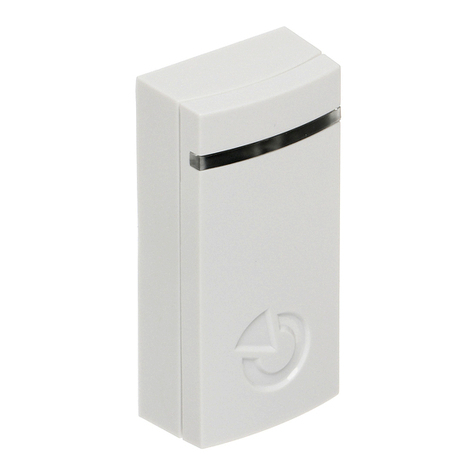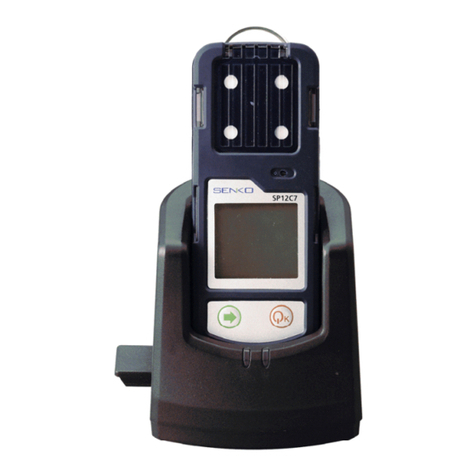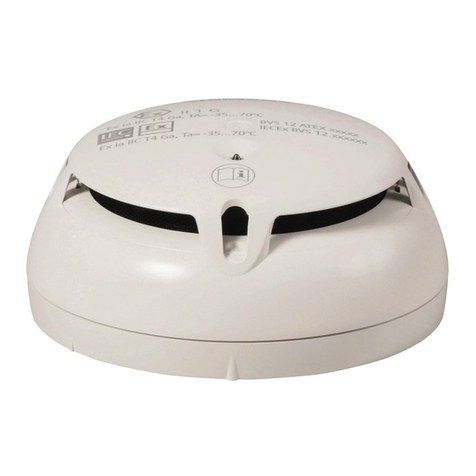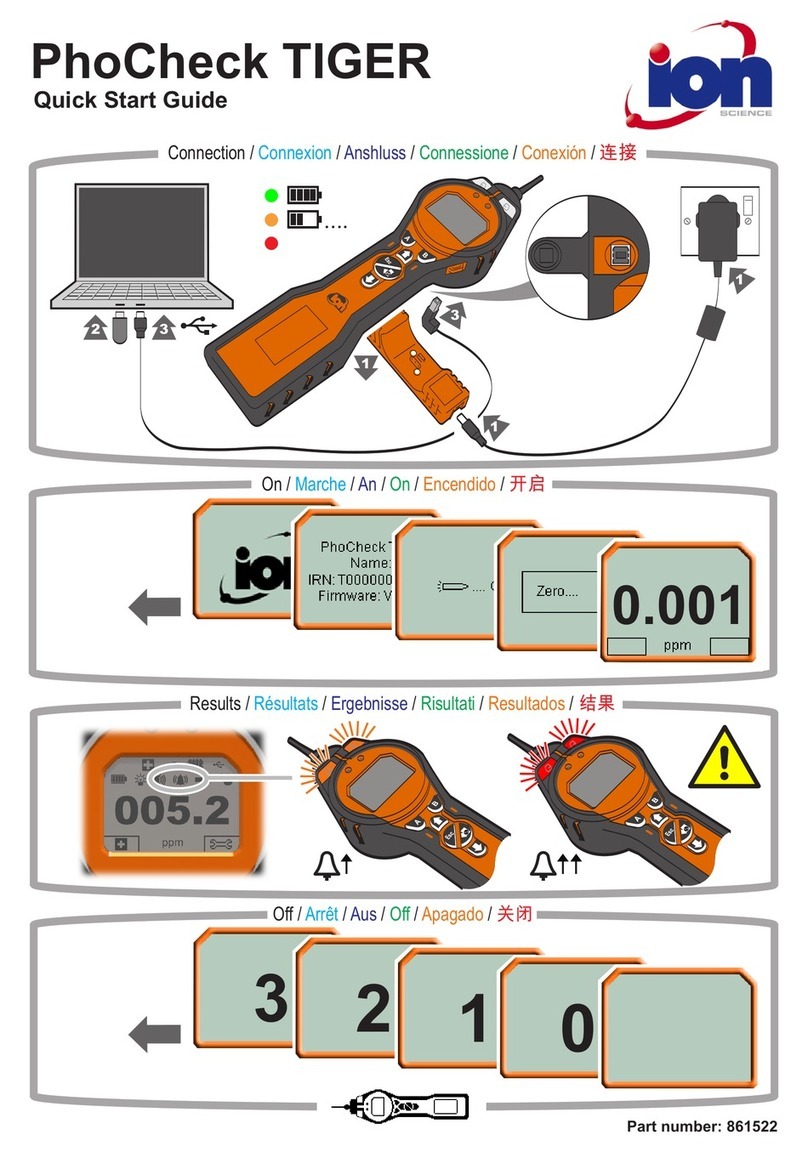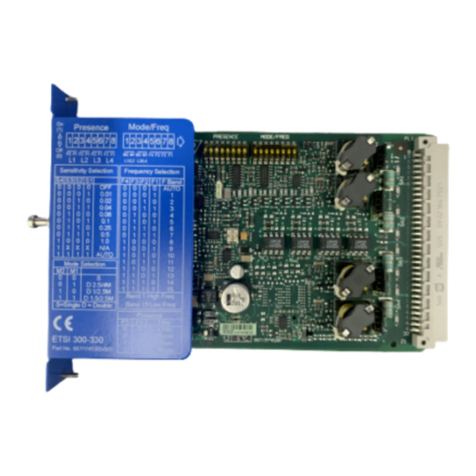Beijing Arctic Star Technology BSM360 User manual

BSM360 Ultrasonic Flaw Detector
Operation Instructions
Beijing Arctic Star Technology NDT Co., Ltd.

Ultrasonic Flaw Detector BSM360 86+010—51658378
2
Content
Chaper I Overview........................................................................................................................................................6
1.1 How to Use the Operation Instructions..............................................................................................................6
1.1.1 Layout of Pages and Conventions of Expressions..........................................................................................6
1.2 Standard Configurations and Options................................................................................................................7
1.2.1 Standard Configuration...................................................................................................................................7
1.2.2 Options............................................................................................................................................................7
Chaper II Technical Parameters and Performance Features of the Instrument.............................................................8
2.1 Measuring Range and Measuring Error.............................................................................................................8
2.2 Operation Environment.....................................................................................................................................8
2.3 Power supply.....................................................................................................................................................8
2.4 Overall Dimension and Weight..........................................................................................................................8
2.5 Performance Features........................................................................................................................................8
2.6 Technical Parameters.........................................................................................................................................9
2.7 Model differences………………………………………………………………………………………… 11
Chaper I Operation...…………………………………………………………………………………………………...12
3.1 Overview of the Instrument ..........................................................................................................................12
3.1.1 Designation of the Instrument’s Components...............................................................................................12
3.1.2 Functional Keyboard....................................................................................................................................12
3.1.3 Using of Power Supply.................................................................................................................................13
3.1.4 Working with Battery....................................................................................................................................13
3.1.5 Connecting the Probe....................................................................................................................................14
3.2 Operation.........................................................................................................................................................14
3.2.1 Basic steps....................................................................................................................................................14
3.2.2 Starting the Instrument..................................................................................................................................15
3.2.3 Description about Screen Display.................................................................................................................15
3.2.3.1 Three Display Modes of BSM360 Screen.................................................................................................15
3.2.3.2 Function Displaying Items.........................................................................................................................17
3.2.3.3 Description about Symbols Displayed on Screen......................................................................................17
3.2.3.4 Display of echo times................................................................................................................................17
3.2.3.5 Description about other symbol.................................................................................................................18
3.2.4 Overview of All Functions.........................................................................................................................18
3.2.5 Basic Operation Way....................................................................................................................................20
3.2.5.1 Selection of Functions...............................................................................................................................20
3.2.5.2 Multipurpose Function Items.....................................................................................................................20
3.2.5.3 Rough and Fine Adjustment of Functions.................................................................................................21
3.2.5.4 Example of Function Operation.................................................................................................................21
Chaper IV Description of all functions and Basic Operation way.................................................................................22
4.1 Adjustment of BASE Group............................................................................................................................22

Ultrasonic Flaw Detector BSM360 86+010—51658378
3
4.1.1 Detection Range (RANGE)..........................................................................................................................22
4.1.2 Material velocity (MTLVEL).......................................................................................................................22
4.1.3 Display starting point (D-DELA Y)...............................................................................................................23
4.1.4 Probe delay (P-DELAY)...............................................................................................................................23
4.2 Adjustment of P/R Group................................................................................................................................24
4.2.1 Probe type (PROBE TYPE)..........................................................................................................................24
4.2.2 REJECT........................................................................................................................................................24
4.3 Adjustment of GATE Group............................................................................................................................25
4.3.1 GA TE LOGIC/ ALARM...............................................................................................................................25
4.3.2 Starting point of the gates (aSTART/bSTART)…………………………………………………………….26
4.3.3 Width of the gates (aWIDTH/bWIDTH).....................................................................................................26
4.3.4 Response and measurement threshold (aTHRESH/bTHRESH)...................................................................27
4.4 Adjustment of settings.....................................................................................................................................27
4.4.1 Setting NO...................................................................................................................................................27
4.4.2 Recall............................................................................................................................................................28
4.4.3 Save.............................................................................................................................................................28
4.4.4 Delete............................................................................................................................................................29
4.5 Adjustment of ANG Group.............................................................................................................................29
4.5.1 Probe Angle (ANGLE)/Probe K V alue (K-V ALUE)....................................................................................29
4.5.2 Thickness of workpiece (T-V ALUE)...........................................................................................................30
4.5.3 Probe’s Front Edge (X-V ALUE)/Coordinate mode (X-COORD)...............................................................30
4.5.4 Probe position/Part diameter.........................................................................................................................31
4.6 Adjustment of GainGroup...............................................................................................................................32
4.6.1 REF GAIN....................................................................................................................................................32
4.6.2 ADD REF.....................................................................................................................................................32
4.6.3 Gain Scan......................................................................................................................................................32
4.6.4 Auto Gain......................................................................................................................................................33
4.7 Adjustment of DAC1 Group............................................................................................................................33
4.7.1 DAC display control (DAC)/DAC Revise (REVISE)..................................................................................33
4.7.2 DAC Plotting Point (RECORD) /DAC Revise Position (REVISE POS).....................................................34
4.7.3 Starting of the A gate (a START) / Width of the A gate (a WIDTH)……………………………………….34
4.7.4 Show Marks/DAC curve mode.....................................................................................................................35
4.8 Adjustment of DAC2 Group............................................................................................................................35
4.8.1 DAC evaluating line (DAC-EL)/ DAC-REF...............................................................................................36
4.8.2 DAC quantifying line (DAC-SL)…………………………………………………………………………..36
4.8.3 DAC reject-judging line (DAC-RL).............................................................................................................36
4.8.4 DAC correction (CORRECT).......................................................................................................................37
4.9 Adjustment of A VG1 Group………………………………………………………………………………….37
4.9.1 A VG mode/Chock vel...................................................................................................................................37
4.9.2 Probe name...................................................................................................................................................38

Ultrasonic Flaw Detector BSM360 86+010—51658378
4
4.9.3 Frequency/crystal diametre...........................................................................................................................38
4.9.4 REF type/REF size.......................................................................................................................................38
4.10 Adjustment of A VG2group............................................................................................................................39
4.10.1 Gate A start/A VG curve..............................................................................................................................39
4.10.2 Record ref...................................................................................................................................................40
4.10.3 Transfers/attenuation correct.......................................................................................................................40
4.11 Adjustment of B / V group.............................................................................................................................40
4.11.1 B san/A scan................................................................................................................................................41
4.11.2 scan direction/scan mode............................................................................................................................41
4.11.3 Recall frame/Recall speed...........................................................................................................................41
4.11.4 Video / DynamicRecall...............................................................................................................................42
4.12 Adjustment of screen savers group................................................................................................................42
4.12.1 Screen saver mode / Preview......................................................................................................................42
4.12.2 DERECTION/SCR DELAY.......................................................................................................................43
4.12.3 screen save text...........................................................................................................................................43
4.12.4 ABOUT/COLOR SET................................................................................................................................44
4.13 Adjustment of MEM Group..........................................................................................................................44
4.13.1 Function group MEM (DA TA NO.)...........................................................................................................45
4.13.2 Recalling a stored data set (RECALL)......................................................................................................45
4.13.3 Storing a data set (SA VE)..........................................................................................................................45
4.13.4 Deleting a data set (DELETE)...................................................................................................................46
4.14 Adjustment of CFG roup...........................................................................................................................46
4.14.1 Measuring way (DETECT) /RS232 SET...................................................................................................47
4.14.2 Coordinate grid (GRID)/ELD backlight (BRIGHTNESS)........................................................................47
4.14.3 Echo display mode (FILL)/Sound of the Buzzer (BUZZER)....................................................................48
4.14.4 Selecting the language (LANGUAGE)/Selecting the units (UNIT)..........................................................48
4.15 Adjustment of advanced group.....................................................................................................................49
4.15.1 Setup Date (DA TE)/Setup Time (TIME)...................................................................................................49
4.15.2 Starting of the A gate (a START) / Width of the A gate (a WIDTH).........................................................50
4.15.3 Calibration of straight probe (CSBT)........................................................................................................50
4.15.4 Calibrating of Angle Beam Probe(CABT).................................................................................................51
4.16 Adjustment of special functions.................................................................................................................52
4.16.1 Gain step.....................................................................................................................................................52
4.16.2 Gain value...................................................................................................................................................52
4.16.3 Full screen...................................................................................................................................................52
4.16.4 Freeze..........................................................................................................................................................53
4.16.5 Memorize peak value..................................................................................................................................53
4.16.6 Extend key..................................................................................................................................................53
4.16.7 Test data display..........................................................................................................................................54
4.16.8 shortcut key.................................................................................................................................................54

Ultrasonic Flaw Detector BSM360 86+010—51658378
5
4.16.9 Locking menus............................................................................................................................................54
4.16.10 Locking data group...................................................................................................................................54
4.16.11 Locking setting.........................................................................................................................................55
4.16.12 Resetting the Ex-factory Setting...............................................................................................................55
4.16.13 Instrument program upgrade.....................................................................................................................56
Chapter V Calibrating the Instrument and Measuring................................................................................................57
5.1 Calibrating of Single Probe.............................................................................................................................57
5.1.1 Calibrating with Known MTLVEL...............................................................................................................57
5.1.2 Calibrating with Unknown MTL VEL...........................................................................................................57
5.2 Calibrating of Double Probe............................................................................................................................59
5.3 Calibrating of Angle Beam Probe....................................................................................................................60
5.4 Application of DAC Curve..............................................................................................................................61
5.5 Contents of Measurement................................................................................................................................62
Chapter VI Communication for the Instrument.............................................................................................................64
6.1 Data Communication......................................................................................................................................64
6.1.1 Connecting PC..............................................................................................................................................64
Chapter VII Maintenance and Repairing.......................................................................................................................65
7.1 Requirement on Environment..........................................................................................................................65
7.2 Charging the Battery........................................................................................................................................65
7.3 Replacing the Battery......................................................................................................................................65
7.4 Tips on Safety..................................................................................................................................................66
Appendix.......................................................................................................................................................................67
Appendix I Notice to User………………………………………………………………………………………..67
Appendix II Terms……………………..…………………………………………………………………………68
Appendix III List of Operations …………………………………………………………………………………70

Ultrasonic Flaw Detector BSM360 86+010—51658378
6
Chapter I. Overview
This is a portable industrial non-destructive flaw detector, which can rapidly, easily and accurately inspect,
locate, evaluate and diagnose various defects (crack, inclusion and pinhole, etc.) in a workpiece without destruction.
It can be used both in a lab and field. The instrument can be widely used in any fields that need defect inspection and
quality controlling e.g. manufacturing industry, iron & steel metallurgical industry, metalworking, chemical industry,
etc., also be broadly used in the active safety inspection and service-life evaluation in such fields as aerospace,
railway transportation and boiler pressure vessels, etc. It is an essential instrument for non-destructive inspection
industry.
When the ultrasonic wave propagates in a job, one can detect the defect in it by the influence on the propagation
of ultrasonic wave based on the acoustic characteristic demonstrated by the defect in the material. Based on this
principle, by using ultrasonic wave one can measure such defects as crack, pinhole and inclusion in such media as
metal, non metal and composite, etc.
Fig. 1.1 Basic working principle for ultrasonic detection
1.1 How to Use the Operation Instructions
It is necessary to read chapter 1, 2, 3 and 4 of the Instructions before operating instrument for the 1st time. The
descriptions in the chapters are necessary preparation for operating the instrument, which will describe all keys and
displays on screen, and explain the operation principle.
By following the directions, you can avoid error or failure due to operation mistake and can have a clear concept
about all functions of the instrument.
1.1.1 Layout of Pages and Conventions of Expressions
In order that you can use the Instructions easily, all operation steps and matters needing attention are arranged in
a consistent way. This is helpful for getting each independent information. The structure of Contents for the
Instructions is as deep as up to the 4th level, and the items after the 4th level will be indicated in bold titles.
Signs for Notes and Remarks

Ultrasonic Flaw Detector BSM360 86+010—51658378
7
Note: the sign of “Note” indicates the features and special aspect that may influence the accuracy of result
during operation.
Remarks: explanation, may include reference to other chapters or special introduction on a certain function.
List of item
The list of item is expressed in the following way
Item A
Item B
…
Operation procedure
The expressing way for operation procedure is as that shown in the following example
l By <Page up> key switch the function page.
l By <F1> key you select BASE functional group, and by <Menu> key, you select the functional menu for
RANGE, and then adjust parameters for RANGE by key + or -.
l You can shift the Rough and Fine adjusting mode by Enter key .
1.2 Standard Configurations and Options
1.2.1 Standard Configuration
Table 1.1 List of standard configurations
Designation Quantity
Main unit 1
4A/9V power adaptor 1
probe connecting cable 2
Carrying case 1
Instruction manual 1
Straight probe 20mm 2.5MHz (One)
Angle probe 10×10 K2 2.5MHz (One)
1.2.2 Options
Table 1.2 List of options
Designation Quantity
Serial cable 1 (9 pin)
Communication software for PC 1 set

Ultrasonic Flaw Detector BSM360 86+010—51658378
8
Chapter II Technical Parameters and
Performance Features of the Instrument
2.1 Measuring Range and Measuring Error
Range of scanning: 0 mm ~10000 mm
Resolution for scanning: 0.1mm (2.5mm ~100mm)
1mm (100 mm ~5000mm)
Range of gain: 0dB ~110 dB
D-Delay: -20µs~+3400µs
P-Delay: 0µs~99.99µs
Sound speed : 1000 m/s~15000m/s
2.2 Operation Environment
Temperature: -10℃~40℃
Humidity: 20%~90%RH
Free of strong magnetic field and corrosion.
2.3 Power supply
Li battery 7.4V 4800mAh
2.4 Overall Dimension and Weight
Overall dimension: 240mm×180 mm×50 mm
Weight: 1.8kg
2.5 Performance Features
l Automated calibration of transducer Zero Offset and/or Velocity ;
l Automated gain、Peak Hold and Peak Memory;
l Automated display precise flaw location(Depth d、level p、distance s、amplitude、sz dB、ф);
l Automated switch three staff gauge ((Depth d、level p、distance s);

Ultrasonic Flaw Detector BSM360 86+010—51658378
9
l Ten independence setup, any criterion can be input freely, we can work in the scene without test block;
l Big memory of 300 A graph and 30000 thickness value.
l Gate and DAC alarm;Acoustic-Optical alarm;
l RS232 port,communication with pc is easy;
l The embeded software can be online updated;
l Li battery, continue working time up to 7 hours;
l Other assistant function;
l Display freeze;
l Automated echo degree;
l Angles and K-value;
l Lock and unlock function of system parameters;
l Dormancy and screen savers;
l Electronic clock calendar ;
l Two gates setting and alarm indication;
l High-speed capture and very low noise;
l DAC、AVG、B Scan (no in BSM360B) ; Solid metal housing (IP65);
l Automated make video of test process and play; (no in BSM360B)
l Provides high contrast viewing of the waveform from bright, direct sunlight to completae darkness and easy to
read from all angles;
l Powerful pc software and reports can be export to excel;
2.6 Technical Parameters
Designation Technical Data
Range of scanning (mm)
Range of scanning (mm):0~10000
Steps: 2.5,5,10,20, 30,40,50,60,70,80,90, 100,150,200, 250, 300, 350, 400,
450,500,600,700,800,900,1000,2000,3000,4000,5000,6000,7000,8000,10000
Adjusting step: 0.1mm(2.5 mm~99.9mm) ,1mm(100mm~10000mm)
D-delay ( s)
D-delay ( s):-20~+3400
Steps: -20,-10,0.0, 10, 20, 50,100,150,200,250,300,350,400,450,500, 600,
700,800,900,1000,1500,2000,2500,3000,3400.
Adjusting steps: 0.1(-20 s~999.9 s) ,1(1000 s~3400 s)
P-delay ( s) P-delay:0.0~99.99
Adjusting steps: 0.01
MTLVEL(m/s)
MTLVEL:1000~15000
7 fixed levels: 2260,2730,3080,3230,4700,5920,6300,12000
Adjusting steps: 1

Ultrasonic Flaw Detector BSM360 86+010—51658378
10
Working mode Single probe (receiving and sending), double probe (one for receiving and
another for sending), transmission (transmission probe)
Frequency Range (MHz) 0.5–15
Gain adjustment (dB) 0~110
Adjusting step: 0.0,0.2,0.5,1,2,6,12
Reject 0%~80% of screen height, step: 1%
V ertical linear error V ertical linear error is not more than 3%
Horizontal linear error Not more than 0.2% in the scanning range
Sensitivity Leavings ≥62 dB
Dynamic range ≥34dB
Alarm Three modes, i.e. forbidden wave, loss wave and auto
Monitoring door
2, expressed by bold transverse line, whose start, width and height are
adjustable.
Adjusting range of start (mm): horizontal pixel 0~208, the displayed value is
relative with the scanning range.
Step: value in mm corresponding to a pixel (relative with the scanning range)
Adjusting range of width (mm): horizontal pixel 4~212, the displayed value is
relative with the scanning range.
Step: value in mm corresponding to a pixel (relative with the scanning range)
Adjusting range of height: 2%~90% of vertical graduation
Step graduation: 1%
Display
Display: high-brightness graphic lattice
A-Scan display area
Full screen or local
A-Scan display freezing and de-freezing A-Scan filling
Data save 300 A-Scan images (including setting of instrument)
30000 values of thickness (300 sets)
Standard communication
interface with PC RS232
Measuring unit mm/inch
Battery Li battery 7.4V 4800mAh
Power adaptor Input 100V~240V/50Hz~60Hz
Output 9VDC/1.5A
Working temperature -10℃~40℃
Working humidity 20%~90%
Port type BNC

Ultrasonic Flaw Detector BSM360 86+010—51658378
11
Overall dimension (mm) 240×180×50
Weight (kg) 1.8

Ultrasonic Flaw Detector BSM360 86+010—51658378
12
Chapter III Operation
3.1 Overview of the Instrument
3.1.1 Designation of the Instrument’s Components
Fig.3.1 Outside Drawing of the Instrument
3.1.2 Functional Keyboard
Keys of BSM360 are included in three groups: Function group, usual key group and special function group.
There are 6 keys in Functional group, in which F1, F2, F3, F4, F5 are corresponding with the 5 functional groups on
screen, and the key <> is used for switching of pages; Usual key group comprises 9 key: Up,down, dB+, dB-,+,-,
gain step key, freeze key, Enter key. they are used for usual operating; and special function group consists of 9
keys: on/off key, full screen key, detection zone,gate A,gate B,Auto gain, extend keypeak
memory and measure display. Overall arrangement of the whole face is as following picture.Overall

Ultrasonic Flaw Detector BSM360 86+010—51658378
13
arrangement of the whole face is as following picture.:
Fig.3.2 Functional Keyboard
Particular Operation Instructions of keys refer to appendix II.
3.1.3 Using of Power Supply
BSM360 can work with plug-in power supply (AC, DC adaptor) or battery.
The detector will switch the power supply to adapter automatically when the power supply adapter is used.
The detector will switch the power supply to battery automatically when the power supply adapter is turned off.
The batteries will be charged automatically When BSM360, which is equipped with battery , is power supplied with
adapter.
3.1.4 Working with Battery
Indicator for charging
At lower right corner of BSM360 horizontal scale, there are symbols for battery voltage:
Battery voltage high Battery voltage drops Battery voltage low
Fig.3.3 Battery status display
If it shows the symbol for low voltage, you must stop detection immediately and use adpter or charge it.

Ultrasonic Flaw Detector BSM360 86+010—51658378
14
Charging the Li Battery.
You can charge the Li battery by using an external battery charger. It is recommended to charge by using the
power adaptor in the standard kit of BSM360. Before using the charger, please read carefully the Operation
Instructions for it. The continuous charging time for Li (4.8Ah) battery is about 4h~5h.During the charging, Rapid
Charging indicator lamp (green) will light up; when the charging completes, the Rapid Charging indicator lamp goes
out.。
3.1.5 Connecting the Probe
Proper probe shall be connected when using BSM360 to inspect. So long that you have a proper cable, and the
working frequency is within proper range, any probe made by our company is suitable for BSM360.The probe
connector for BSM360 is BNC.
The probe shall be connected to the socket at top of the instrument casing. Both connector sockets , have
different function, sending socket at left (with red mark) and receiving socket at right (with blue mark) .With
Single-Probe mode, the sending socket can be used only. When connecting a double-wafer (TR) probe (one wafer for
sending, another for receiving) or two probes (one for sending, another for receiving), take care that the sending
probe shall be connected to the sending socket and receiving probe to the receiving socket .Otherwise, it may result in
loss or disorder echo waveform.
3.2 Operation
3.2.1 Basic steps
a) Get ready the job;
b) Insert the probe plug into the probe socket of the host, rotate tightly the locking nut;
c) press, turn on the instrument;
d) It will carry out self test;
In normal case, when you turn on the unit, it will automatically enter into the status that it is in during last
turning off. The instrument parameters are consistent with last turning off, but the waveform during last turning
off will not display.
e) Check voltage of the battery; If the power monitor shows that the voltage is low, it will turn off
automatically 1 min after alarming bell.
f) According to your application ,Ten independence setups can be applied, any criterion can be input freely,
we can work in the scene without test block.
Whether it needs to calibrate the instrument, if yes, ask a professional technician to calibrate it (refer to
chapter IV);
g) Measure;

Ultrasonic Flaw Detector BSM360 86+010—51658378
15
h) Save the results, big memory of 300 A graph and 30000 thickness value.
i) Turn off the instrument;
3.2.2 Starting the Instrument
press, turn on the instrument,it will carry out self test.After five seconds, the instrument come into operation
mode。
Remarks:
Press “Combined Key ” as startup and loading of the program to execute some special
functions, Particular Operation Instructions of Combined keys refer to appendix II.
3.2.3 Description about Screen Display
Fig. 3.4 Description about screen
3.2.3.1 Three Display Modes of BSM360 Screen,
A-scan at normal mode

Ultrasonic Flaw Detector BSM360 86+010—51658378
16
Fig. 3.5 A-scan at normal mode
A-scan at Enlarged mode
You can activate Enlarge mode by . The gain and selected dB step value will be always displayed on the
screen. And at the same time, all other functions are locked.
Fig. 3.6 A-scan at Enlarged mode
Manual B-scanning (no in BSM360B)

Ultrasonic Flaw Detector BSM360 86+010—51658378
17
Fig. 3.7 B-scan mode
3.2.3.2 Function Displaying Items
The 15 functional groups are displayed at lower part of the screen in three pages. The current functional group
will be highlighted, as that shown in fig. 2-4. and at the same time, the current function in the current functional
group will also be highlighted, as that shown in fig.2-4. Under Enlarged mode, the display of functional groups
disappear.
3.2.3.3 Description about Symbols Displayed on Screen
In the fig left, echo amplitude H=84%, depth
to the reflector=1.57mm, surface distance=25.14mm, echo times is 2, start of range=0.0mm, end of range=40.0mm
In the fig left, echo amplitude(pixels) H=148,
Angular distance=27.68mm.
Fig. 3.8 Description about the display field in screen
3.2.3.4 Display of echo times
When the angle of probe is not zero and the measured echo is multi-echo, the echo times will be drew on the
status column as the following.
\ one time echo
\/ two times echo

Ultrasonic Flaw Detector BSM360 86+010—51658378
18
/\/ three times echo
/\/\ four times echo
/\/\- five and more times echo
3.2.3.5 Description about other symbol
There some other symbols above functional menu,Freeze and Communication symbol is beside the battery
status symbol.
symbol
name Description
Freeze Freeze state。
Communication The instruments is communicating with PC.
Angular distance distance from the incidence point to the reflecte point.
Depth to reflector depth from the incidence point to the reflecte point.
Surface distance surface distance from the incidence point to the reflecte point.
Echo amplitude The amplitude value of max echo within the gate.
Edge sampling It show that the instrument is in “Edge sampling”mode,depth and angular distance
is the measure value of the first echo which is above the gate and within the gate.
Peak sampling It show that the instrument is in “Peak sampling”mode,depth and angular distance
is the measure value of the echo with the max amplitude within the gate。
Memory peaks peaks memory function is enabled.
Making video Dynamic Record function is enabled.
Operation error Operation error last time.
Radian revise Abscissa and measure result is revised according to radian.
3.2.4 Overview of All Functions
The functions of BSM360 are included in 15 functional groups and several special functions.
The functional groups include BASE, P/R, GA TE, CHAN, AGLEY , GAIN DAC1, DAC2, A VG1,
A VG1,BSCAN, SCR, MEM, CFG, ADV they will be introduced in the following table.
No.
group Functions Description
1 BASE RANGE, MTL VEL, D-DELAY , P-DELA Y Basic
adjustment
items necessary
for the display
range
1 P/R PROBE TYPE, , REJECT Sending and
receiving the

Ultrasonic Flaw Detector BSM360 86+010—51658378
19
adjustment items
needed
1 GA TE GA TE LOGIC/ALARM, aSTART/bSTART, aWIDTH/bWIDTH,
aTHRESH/bTHRESH
Relative items for
gate configuration
1 SET SETTING NO.,RECALL、SAVE、DELETE Relative items for
independence setups
1 ANG ANGLE/K-V ALUE, T-V ALUE, X-V ALUE/X-COORD, PROBE
POS/P ART DIA
Setting relative with
angle probe
2 Gain REF GAIN、ADD REF、SCAN DB、AUTO-80 Relative items for
gain
2 DAC1 DAC/REVISE, RECORD/REVISE POS, aSTART/aWIDTH, SHOW
MARK/DAC MODE
Plotting DAC curve
2 DAC2 DAC-EL/ERS-REF, DAC-SL, DAC-RL, CORRECT Setting relative with
DAC curve
2 AVG1 AVG MODE/CHOCK VEL、 PROBE NAME、 FREQUENCY/DIAMETER、 REF TYPE/REF
SIZE
2 AVG2 A START/AVG CURVE、RECORD REF、TEST ATTN/CORRECT
3 B / V B-SCAN /A-SCAN、SCAN WAY/SCAN MODE、RE-FRAME/RE-SPEED、
REVIEW/VIDEO
3 SCR SCR TYPE/PREVIEW、DIRECTION/SCR DELAY、SCR TEXT、ABOUT/COLOR
SET
Screen saver
3 MEM DA TA NO, RECALL, SA VE, DELETE Setting of data
memory
3 CFG DETECT/RS232 SET, GRID/BRIGHTNESS, FILL/BUZZER,
LANGUAGE/UNIT
Setting of relative
state
3 ADV DA TE/TIME, aSTART/ aWIDTH,CSBT,CABT Advanced function
Other special functions can be realized by Special Function (SF) keys. The functions of each SF keys are
introduced in the following table.
Special Functions Description of function
Gain step To adjust the gain step
dB+、dB- To adjust the gain
Full-screen To switch over in full screen
Freeze To freeze waveform
Dynamic record On/off Dynamic record
Memory Peaks Capture the max value of echo on the screen
Measure display Select the display mode of measure result on the screen
Enter Switch of multi-menu, parameters, confirmation of functions
Page up Switch function page

Ultrasonic Flaw Detector BSM360 86+010—51658378
20
3.2.5 Basic Operation Way
You can select a functional group by <Fn> key; select certain function by <Menu> key and ; at this time, you
can modify parameters of this current menu by Coder And for some functional menus, they are shared by two
functions, when you have selected such a function, by pressing or the corresponding <Menu> key, it can be
shifted to another function.
3.2.5.1 Selection of Functions
There are 5 functional groups displayed below the A-scan zone, which can be selected by the corresponding
<Fn> key, and the selected one will be highlighted. The four corresponding function items will be displayed closely
next to the right of A-scan zone, which can be selected by press “↑” or “↓” key key.
3.2.5.2 Multipurpose Function Items
In some cases, a functional item has two functions. thus they can be shifted by pressing down the press “↑” or
“↓” key key again or striking key. The symbol “>” displayed behind the function name means that it is a
multipurpose function item.
Function I Function II Functional group to which
GA TE LOGIC
ALARM
G
A TE
aSTART
bSTART
G
A TE
aWIDTH
bWADTH
G
A TE
aTHRESH
bTHRESH
G
A TE
ANGLE
K
-
V ALUE
ANG
X
-
V ALUE
X
-
COORD
ANG
PROBE POS PART DIA ANG
RECORD REVISE POS DAC1
aSTART aWIDTH DAC1
SHOW MARK DAC MODE DAC1
DAC-EL ERS-REF DAC2
A VG MODE CHOCK VEL A VG1
FREQUENCY DIAMETER A VG1
REF TYPE REF SIZE A VG1
A START A VG Curve A VG2
CORRECT TEST A TTN A VG2
B-scan A-scan B/V
SCAN W AY SCAN MODE B/V
RE-FRAME RE-SPEED B/V
DIRECTION SCR DELAY SCR
Table of contents
